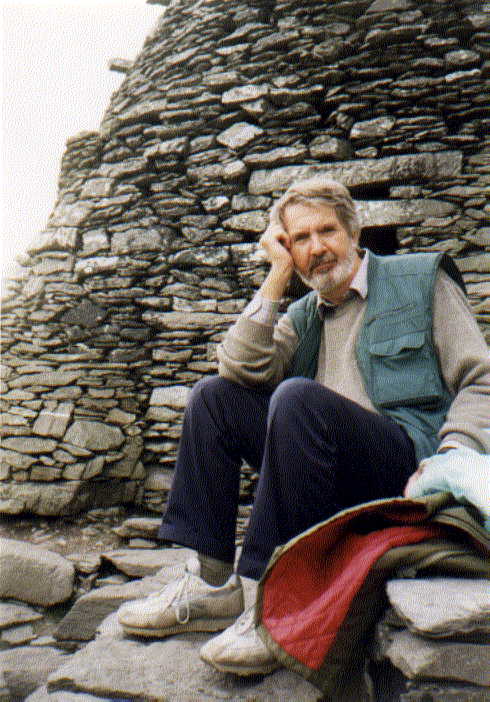

Now if everybody put their holiday photos on the web....
Seriously though - that hut is about 1400 years old and is sitting on a rock 10 miles out from the southwest coast of Ireland. This is attributable to good workmanship and a benign microclimate in the top of the rock. It seems that the wind hits the base of the rock, is deflected upwards and creates a relatively calm zone on the top.
Access is by boat from Ballinskelligs or Portmagee, opposite Valentia Island.
To complete this advert for Bord Fáilte (Irish Tourist Board), here's a quote from the Eyewitness travel guide for Ireland:
'Skellig Michael, also known as Great Skellig, is an inhospitable pinnacle of rock rising out of the Atlantic and covering an area of 17 hectares (44 acres). Perched on a ledge almost 218 m (714 ft) above sea level and reached by an amazing 1,000-year-old stairway is an isolated early Christian monastery.
Monks settled for solitude on Skellig Michael during the 6th century, building a cluster of six corbelled beehive cells and two boat-shaped oratories. These dry-stone structures are still standing despite being raked by storms over the centuries.
The monks were totally self-sufficient, trading eggs, feathers and seal meat with passing boats in return for cereals, tools and animal skins. The skins were needed to produce the vellum on which the monks copied their religious manuscripts. They remained on this bleak island until the 12th century, when they retreated to the Augustinian priory at Ballinskelligs on the mainland.'
Back to home page
Irish tourism,monastic history,Ballinskelligs,
Portmagee,Valentia Island,Skellig Michael,Great Skellig,
czczcz